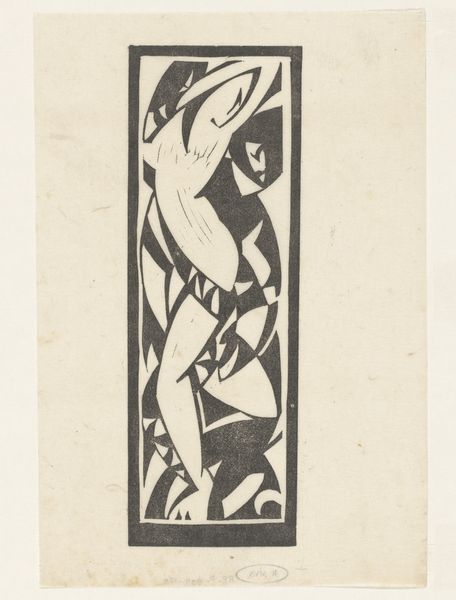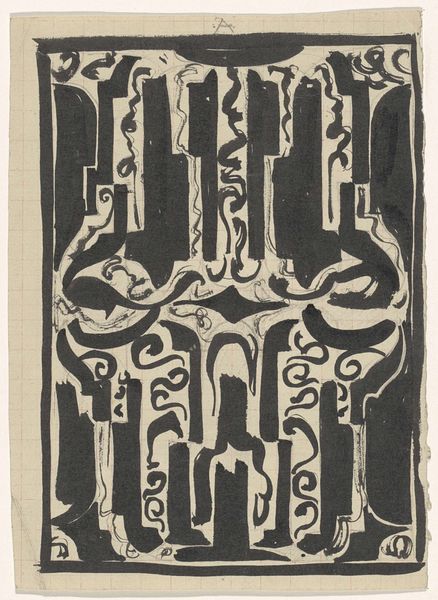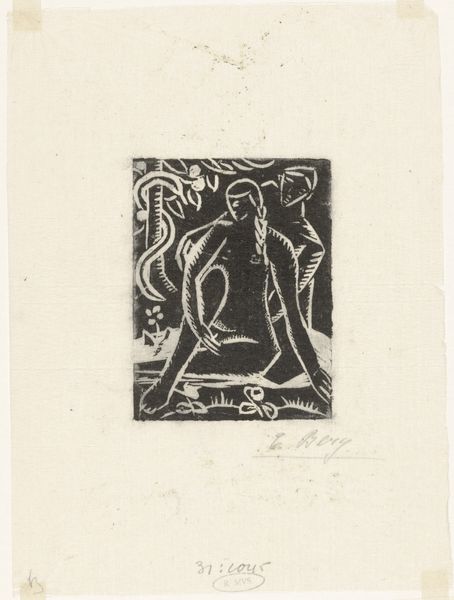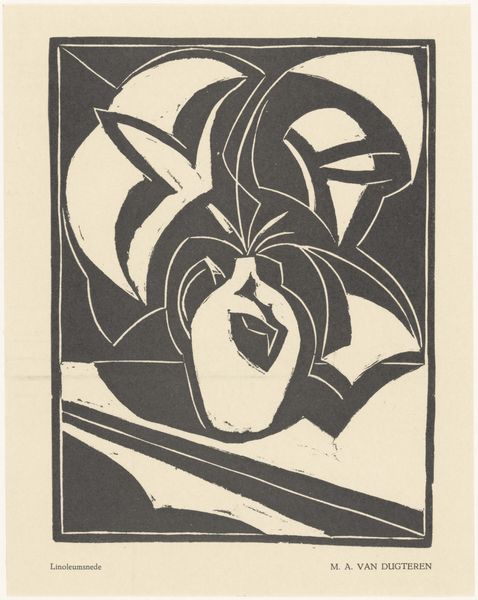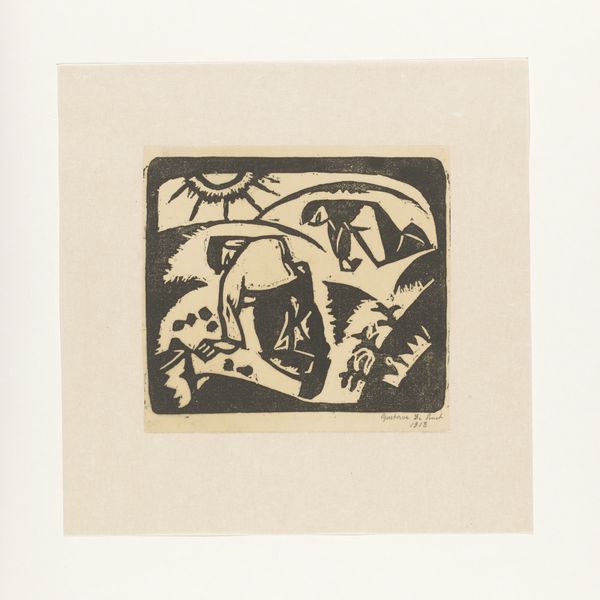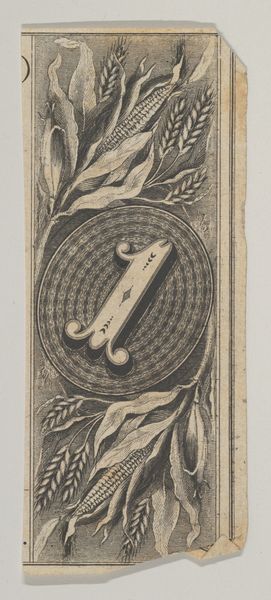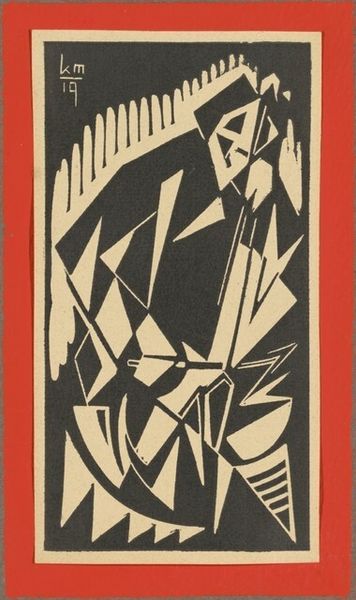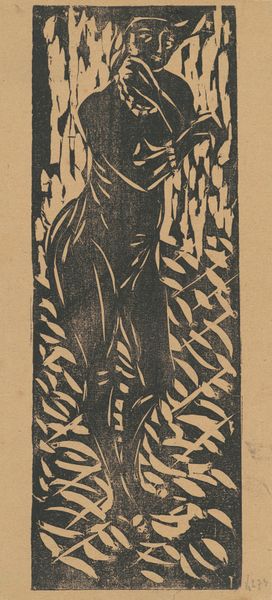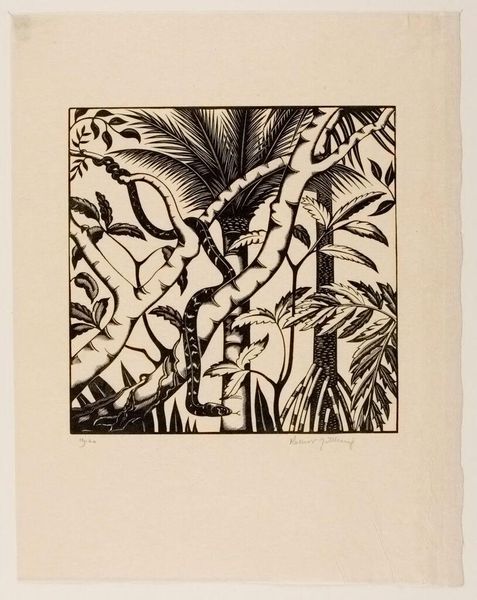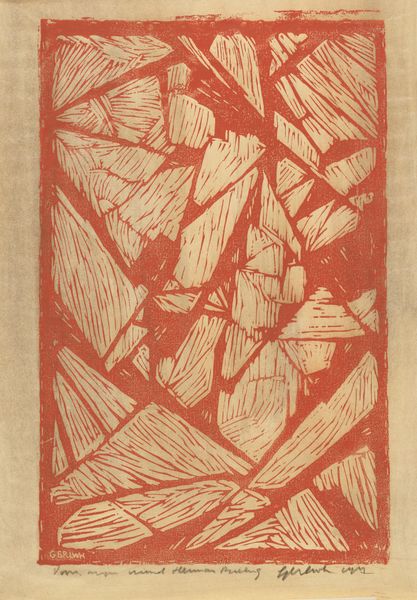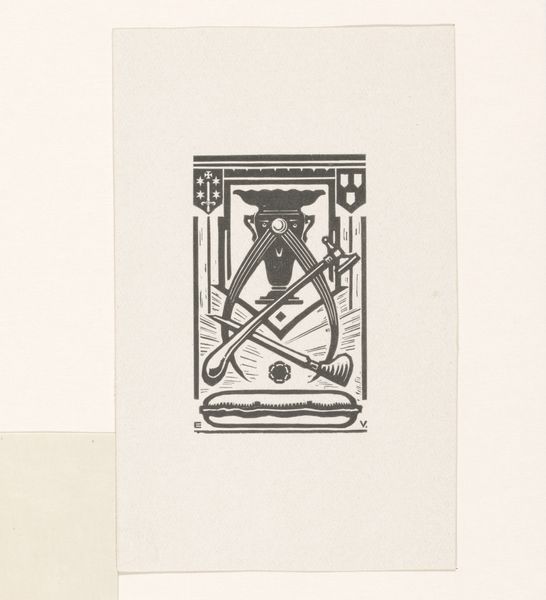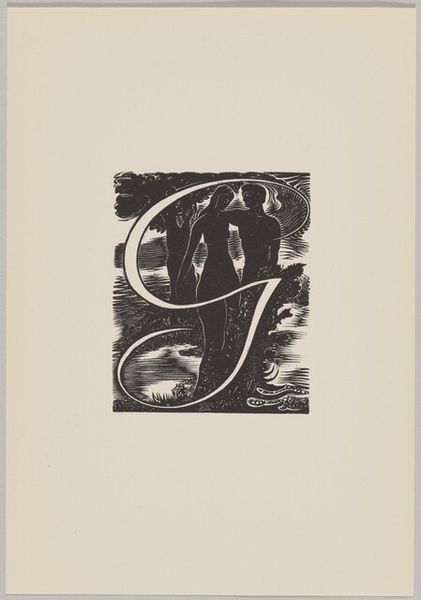
graphic-art, print, woodcut
#
graphic-art
#
organic
#
art-nouveau
# print
#
woodcut effect
#
leaf
#
linocut print
#
organic pattern
#
woodcut
#
pattern repetition
Dimensions: height 115 mm, width 60 mm
Copyright: Rijks Museum: Open Domain
Editor: We're looking at Julie de Graag's "Bladwerk," a woodcut print from around 1901-1905. It strikes me as quite a formal interpretation of natural forms. How do you interpret this work, especially given its historical context? Curator: I see this as a potent example of Art Nouveau’s complex relationship with nature and industrial production. While appearing decorative and ornamental, works like “Bladwerk” challenged the rigid hierarchies that separated art from craft. Do you notice how the stylized leaves, while referencing the natural world, are meticulously ordered and repeated? Editor: Yes, the repetition almost feels mechanical. Curator: Exactly. De Graag's choice of woodcut, a traditional craft, is interesting because it positions itself against mass production while utilizing the aesthetics born from it. Further, we have to ask ourselves: Whose nature is being represented here? Is it accessible to all or a nature mediated by class and gender? Does this regular pattern deny a place for irregularity, imperfections, or decomposition in nature? Editor: I hadn't considered that. It does feel a bit… sterile, in a way. So you're saying it reflects not just nature, but also the social control being imposed at that time? Curator: Precisely. De Graag’s "Bladwerk" invites us to question what and who is included and excluded in the very act of representing "nature" and its relation to systems of power. How does it shift your perception now? Editor: It makes me realize how much art can subtly reinforce existing structures, even when it appears simply decorative. It's not just about the beauty of nature, but the social construction of it. Curator: And the power dynamics inherent in that construction. Food for thought!
Comments
No comments
Be the first to comment and join the conversation on the ultimate creative platform.
